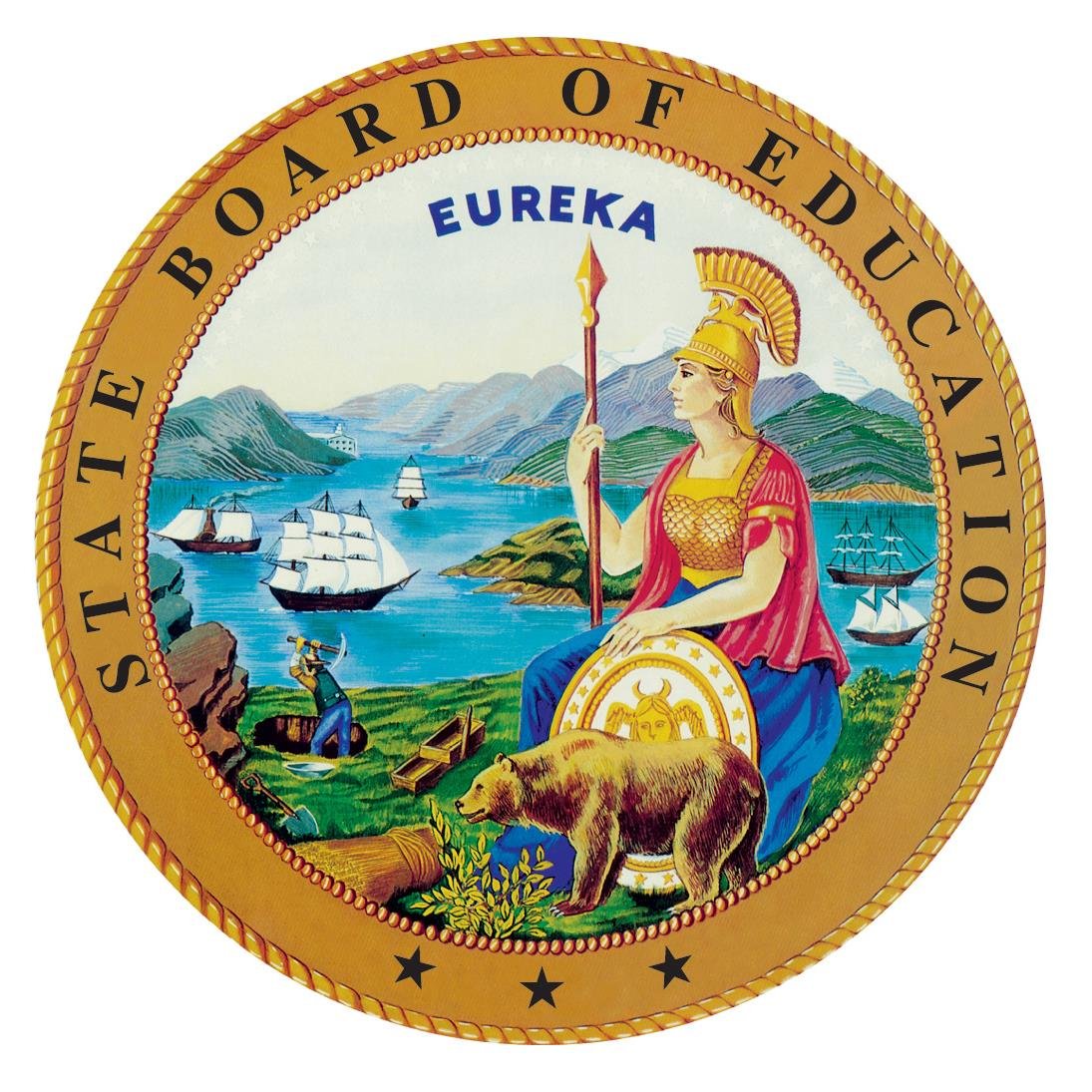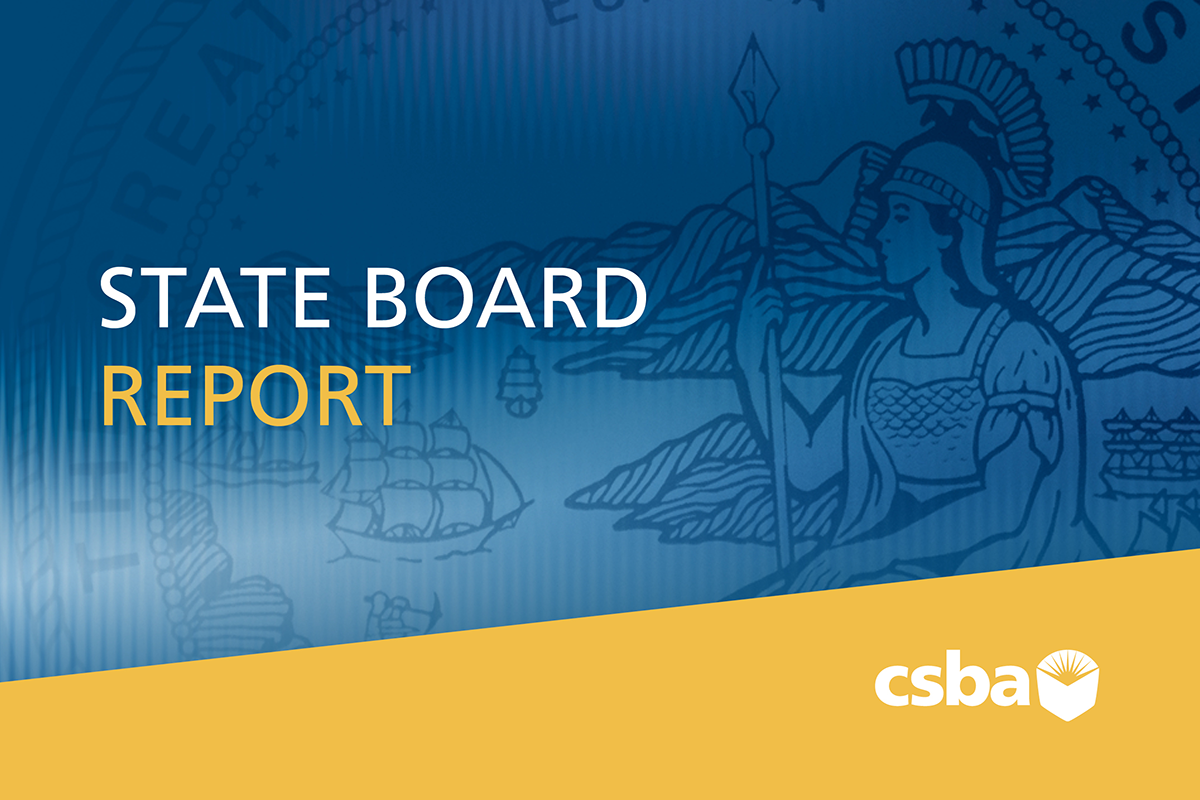In a lot of ways, California is on the right track when it comes to navigating the pandemic, State Board of Education President Linda Darling-Hammond said during the board’s Sept. 9 meeting, which covered changes to the state Local Control and Accountability Plan template, adoption of another round of the shortened Smarter Balanced Summative Assessments and more.
For instance, according to Burbio’s school closure tracker, about 1,400 schools in 35 states have closed for quarantine or reverted to distance learning, and fewer than 10 of them have been in California, she said.
“If we can stay the course, things will be much easier in the weeks and months ahead. The science clearly shows that the multi-layered mitigation strategies like diligent masking, testing, screening, handwashing and ventilation are effective at preventing infection,” Darling-Hammond said. “As we continue on this path with purpose and with diligence, we will see cases of illness continue to decline, and we’ll see fewer needs for quarantining.”
On the other hand, several members of the board expressed a range of concerns during an item in which California Department of Education Staff sought feedback regarding the draft LCAP template and instructions changes that incorporate the requirements in Senate Bill 98 and Assembly Bill 130 — legislation passed in response to the current and emergent needs stemming from the pandemic — that the document has strayed too far from its original intent.
“When I think about what the LCAP was intended to do — to be a strategic document to guide instructional planning and provide services to our most needy students — I’m afraid that it has turned into a complex accounting document that only CPAs can understand and only CPAs can fill out,” said board member Sue Burr. “How can we return to what the original intent was while still keeping the needed accountability?”
Several public commenters, including CSBA Legislative Advocate Carlos Machado, expressed similar concern. In a letter submitted to the board prior to the meeting by the coalition of education management and labor, of which CSBA is a part, education leaders throughout the state note that “the LCAP is long past the point where one can reasonably claim that it is simple and transparent for members of the community, as was originally intended. Adding components to either document that are not required in statute will further cloud the level of transparency.”
COVID-complications remain a challenge
Another issue, Burr said, is that the budget was put together at a time when many thought the educational landscape and the state of the pandemic were going to look much rosier than they are now with the surge in COVID-19 delta variant infections.
The LCAP currently requires that local educational agencies describe specific actions and budgeted expenditures that will increase or improve services for low-income students, English learners and foster youth in proportion to the increase in funds allocated to support those student groups. Among the numerous proposed changes, AB 130 also requires this summary table to include a calculation of the total difference between the total budgeted expenditures of planned actions reported in the contributing summary table of the LCAP and the total estimated actual expenditures. If LEAs ultimately spent less than planned in this area, they must provide a description of how unused funds will be used moving forward, including a demonstration that the planned uses of those funds satisfy the requirements for specific actions to be considered as contributing toward meeting the increased or improved services requirement.
While it’s true that schools have received a significant influx of state and federal funds, they’re also struggling to hire the number of teachers, nurses and counselors that they’d planned. “I just worry that we’re setting up our LEAs for failure by a circumstance that has changed,” Burr said. “I feel like we have legislation that is still in a place that we’re not and we’re not going to be for a long time. I don’t want to be implementing things — I feel like we’re trying to hit a moving target — that really are not workable.”
Board Vice President Ilene Straus asked that when CDE staff returns in November with a final draft of the document, that they include areas in which the LCAP is redundant and could be trimmed without compromising accountability. Additional stakeholder feedback on these proposed changes can be provided at LCFF@cde.ca.gov before the November meeting.
Adjusted Smarter Balanced blueprints carry over
Per CDE’s recommendation, the board approved the continued use of adjusted blueprints for the Smarter Balanced Summative Assessments in English language arts/literacy and mathematics for the 2021–22 administration. The shortened blueprints — identical to those used in the 2020–21 academic year — reduce the amount of time students spend on the summative assessments, allowing for increased instructional time and flexibility in scheduling, as well as minimizing the risk of connectivity or network issues. Additionally, individual student overall scale scores and achievement levels can continue to be reported, though there is a reduction in the detailed student performance information reported to educators, parents and guardians, and claim-level results for individual students as well as target reports for groups of students cannot be reported until 2022–23.
New student board member Rana Banankhah noted that as someone who took the exams last year with the shortened blueprint, she and her peers were able to complete the assessments even in the face of connectivity issues and other challenges. “This shortened version of the test gave us the flexibility to account for that loss of time because of these internet issues,” Banankhah said. “I think it’s important to note that while there might be somewhat of a tradeoff in how detailed the reports are, this is offset by the fact that more students are able to fully complete their test in class.”
Darling-Hammond said she felt confident in the technical advisory group that advises the Smarter Balanced Consortium’s judgement of the stability and reliability of the scores. She also highlighted that while California is off to a good start in the face of COVID’s delta variant this year relative to many other states, there is no way to predict where things will be months down the road and ensuring flexibility now will benefit students and LEAs in the spring.
New targets for IDEA Performance Plan Indicators
The board also received an update on new targets for State Performance Plan Indicators in the Annual Performance Report for Part B of the Individuals with Disabilities Education Act of 2004 through the 2025–26 year.
Proposed changes to the 17 indicators were largely welcomed by the board. For example, to align with the federal data collection file specifications, states must now include 5-year old’s who are enrolled in kindergarten in the calculation for Indicator 5. CDE staff proposed the following calculation:
- The number of students with disabilities served inside the regular class 80 percent or more of the day divided by the total number of students aged 5 who are enrolled in kindergarten and aged 6 to 22 with disabilities.
- The number of students with disabilities served inside the regular class less than 40 percent of the day divided by the total number of students aged 5 who are enrolled in kindergarten and aged 6 to 22 with disabilities.
- The number of students with disabilities served in public or private separate schools, residential facilities, or homebound/hospital placements divided by the total number of students aged 5 who are enrolled in kindergarten and aged 6 to 22 with disabilities.
Stakeholders who provided feedback said these more ambitious and rigorous targets would encourage better placement and earlier interventions for students with disabilities. The CDE will present the final targets for consideration for approval at the board’s November meeting.
In other State Board meeting news:
- LEAs’ LCAP Federal Addendums for 2020–21 were approved. LEAs are required under the Every Student Succeeds Act to complete an LEA Plan to address required provisions of ESSA programs under which an LEA applies for federal education funds. Together, the LCAP, Addendum and Consolidated Application (ConApp) serve as the ESSA LEA Plan in California. The Addendum allows LEAs to complete a single plan, together with the ConApp, to meet both state and federal requirements, align state and federal resources, and help minimize duplication of effort at the local level.
- The board ratified a waiver for the 2020–21 school year that waives specific requirements under the Elementary and Secondary Education Act, including Section 1127(b) of Title I, Part A of the ESEA so that the CDE may waive, more than once every three years, if necessary, the 15 percent carryover limitation in ESEA section 1127(a) for FY 2020 Title I, Part A funds; and Section 421(b) of the General Education Provisions Act to extend the period of availability of FY 2019 funds for programs in which CDE participates under its approved consolidated state plan until Sept. 30, 2022. Additional details are available here.
- The board also ratified the state’s American Rescue Plan Elementary and Secondary School Emergency Relief – Homeless Children and Youth Application, which describes how California will administer state-level ARP Homeless Children and Youth funds and how it will support LEAs in using the funds. The CDE will reserve 25 percent of the total ARP Homeless I funds for state level activities and the remaining 75 percent are to be allocated to current McKinney-Vento grantees as recommended in the guidance letter sent by federal Education Department. The funds will be administered to eligible LEAs based on the number of homeless students enrolled during the 2018–19 school year.
- Student board member Rana Banankhah of Modesto High School in Modesto, California, and Dr. Francisco Escobedo — former superintendent of Chula Elementary School District and 2019 Superintendent of the Year for ACSA Region 18 — were sworn in.
- The board appointed Mary Nicely to chief deputy superintendent of public instruction following Stephanie Gregson’s departure to the California Collaborative for Educational Excellence. Nicely has served as the deputy superintendent of technology at the CDE, recently supporting the Superintendent’s Digital Divide Taskforce by working with stakeholders, technology companies and major internet providers throughout the state to close technology gaps impacting students and educators.
The next State Board virtual meeting is scheduled for Nov. 3–4, 2021. View the full meeting calendar.




